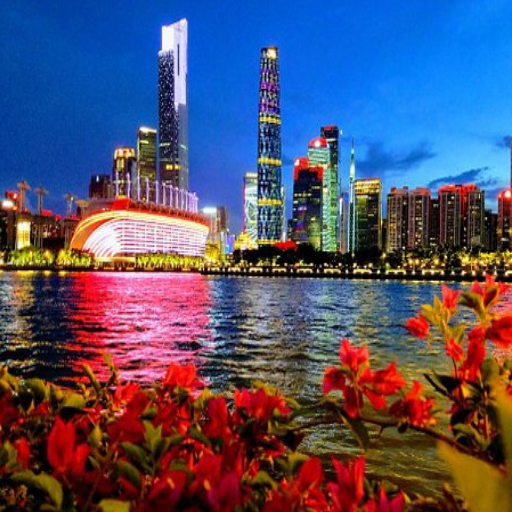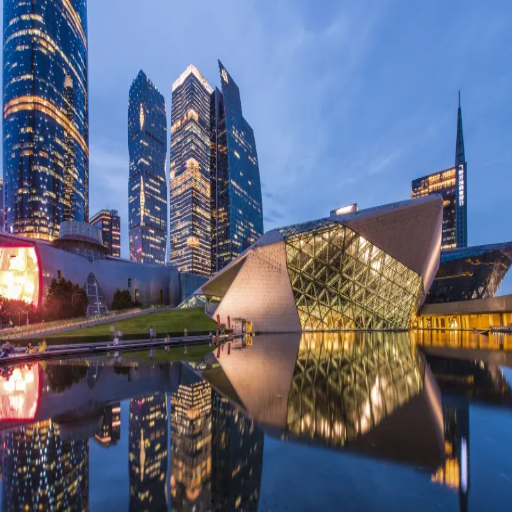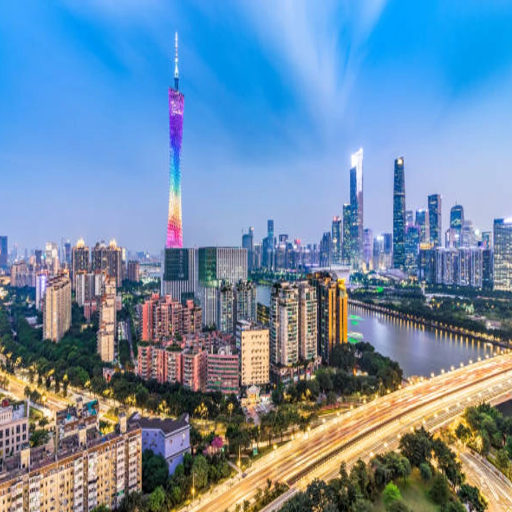Southern China's Guangzhou is the center of activity in the region, and for a good reason- it is the perfect metropolis for folks who appreciate history. It is referred to as the City of Flowers, which offers mouth-watering cuisines, and landmarks such as parks that exhibit Guangzhou’s venerable history. The cuisines offered, including the famous dim sum, will surely get the attention of food enthusiasts. At the same time, history lovers will find solace in the culturally rich landmarks in this mouth-watering city. In this text, I will review everything Guangzhou offers to ensure you have the best trip. Whether you are an avid history reader, a fan of food, or someone who enjoys urban exploration, the city of Guangzhou is guaranteed to surprise you like never before.
What Are the Top Attractions in Guangzhou?

Exploring the Guangzhou City Museum
The Guangzhou City Museum offers exhibits portraying the development of Guangzhou and the Pearl River Delta from ancient times to the 21st century. This evolution showcases the city's ancient trading roots, port activities in the Ming Dynasty, and present-day business and trade vitality.
The museum is primarily characterized by ancient architecture, trade, and art exhibitions. It has revolutionary war-themed sections, each set to a different epoch. More than 10,000 artifacts depicting Guangzhou's development are on display. Working exhibit guides are always ready to answer questions and ensure the best learning experience possible.
Guangzhou City Museum, along with Zhenhai Tower, is a landmark featuring breathtaking panoramic views of Guangzhou City, a modernized port metropolis filled with trade. It combines revolutionary and ancient Chinese culture. The tower is a notable landmark that served as a fortress and watchtower during the Ming Dynasty. Don't miss out on this dynamic city's legacy; be sure to pay a visit at your earliest opportunity.
Must-See Landmarks: From Canton Tower to Yuexiu Park
Canton Tower: The Canton Tower is a modern wonder of architecture and engineering. Right at the heart of Guangzhou lies the Canton Tower, an iconic sight that will surely blow your mind. It stands tall at 604m and ranks among the highest towers in the world. The experiences it provides are sure to leave you awe-struck. The tower has unique features, including the world’s highest revolving restaurant. At its highest point, a bubble tram ride gives you a breathtaking panoramic view of the city. If you thought that was impressive, just wait until night rolls around, the tower glows with LED lights, adding another level of beauty to Guangzhou. Be it the sleek tower interiors or the stunning views, it is clear that the tower is a significant landmark of innovation and growth.
Yuexiu Park: Positioned at the core of the energetic city, Guangzhou's largest park, Yuexiu Park, is its green lung. Covering an area of 860,000 square meters, it is a harmonious blend of natural settings and rich historical and cultural sites. The Five Rams Sculpture, which is regarded as the emblem of Guangzhou and the park is proud to have it, marks the prosperity and origin of the city. It draws myriad tourists to the park every single year. Toward the less historic part of Yuexiu Park, there is also a variety of calm lakes, colorful blooming gardens, walking trails, and jogging paths, which provide a peaceful setting to take a break. Its significant blend of modern and old styles gives a rich outlet where residents and visitors can find great relaxation and retreat in tranquility, making it an essential place of Yuexiu Park. The combination of nature and culture makes it unique in the region.
Cultural Insights at Shamian’s Grandest Abode
Perched along the shores of the Pearl River, the Shamian Island evokes a unique blend of Guangzhou’s multicultural and colonial past’s distinctive charm. It features mixed European architecture due to its past in the 19th century as a concession region shared by French and British powers. Driving through the shaded avenues exposes exquisite neoclassical structures alongside Renaissance façades and baroque-style buildings, several of which have been turned into museums, bistros, and boutique hotels.
Beyond being an aesthetic appeal, Shamian is filled with countless historic and cultural gems. It depicts Guangzhou’s vast history and the pivotal exchange with Western civilizations during the Empress-led trade periods. Spoiling the island’s pristine view today are modern-day art and cultural performances, frequent exhibitions, and various themed festivals that serve as a window into Guangzhou’s rich past. The island is filled with themed bistros and art studios that invite tourists looking to experience the exquisite atmosphere of Shamian Island, which portrays a blend of Shamian-dominated traditional architecture and modern technology.
How Does Guangzhou Compare to Hong Kong and Macau?

Understanding the Differences Between Cantonese and Mandarin
Cantonese and Mandarin are branches of the same Chinese language family tree but differ in pronunciation, vocabulary, and usage. Cantonese is most widely spoken in the Guangdong Province, Hong Kong, and Macao. Unlike Mandarin, which has a more straightforward approach to tones, Cantonese has nine tones, which increases its expressiveness, making it uniquely beautiful. However, it is challenging to learn. Mandarin is broadly accessible in communication across the country and uses a simpler four-tone system.
One other key difference is found in their written form. While speaking Chinese, both languages employ Chinese characters. Cantonese speakers use traditional characters when writing, preserving the elegance and sophistication of the past. Mandarin, as used in Mainland China, relies extensively on simplified characters due to their ease of learning, which were implemented to increase the literacy rate in the country.
Cantonese is deeply rooted in the traditions of Southern China. It is the language of Cantonese opera, Chinese music, and Southern Cuisine, unlike Mandarin, which serves as a linguistic unifier for the diverse regions of China. The government uses it, and it is taught and used in the media. Despite their differences, both languages are essential to the Chinese-speaking world. Together, they offer unique viewpoints on China’s rich and diverse history and its modern and interconnected identity.
A Travel Survival Kit for Guangzhou and Hong Kong
Packing for a trip to the bustling cities of Hong Kong and Guangzhou requires meticulous planning so that there are no loose ends to deal with during the journey. The travel survival kit is essential for making your trip unforgettable and easier, and here is all the essentials you should include:
Adaptors and Power Banks: Hong Kong and Guangzhou have different socket types. Hong Kong primarily uses Type G, while Guangzhou uses Type I. Make sure to pack a universal travel adaptor along with a power bank to keep your devices running optimally.
Transportation Cards: To make travel easier, grab the Lingnan Pass for Guangzhou and the Octopus Card for Hong Kong. These travel cards grant easy access to convenience store payments, buses, and trains in no time.
Weather-Appropriate Clothing: Both cities have humid subtropical climates. Since the locals are accustomed to sudden showers, be sure to carry a raincoat or an umbrella in addition to lightweight clothing.
Multilingual Travel Apps: Although English is widely spoken in Hong Kong, it is rare to hear it in Guangzhou. Using translation aid apps will not only help you communicate with locals but also help you navigate Guangzhou. For reliable assistance, equip your devices with offline maps and translation tools such as Pleco.
Health and Safety Supplies: It is a good idea to include a small first aid kit complete with band-aids, antiseptic wipes, and any personal medications your group may need. Masks and hand sanitizers are also advisable, especially in crowded areas.
Local Currency and Digital Payment Options: For cash transactions with smaller merchants, it's good practice to have some Hong Kong dollars (HKD) and Chinese yuan (RMB) handy. Both cities are also known for having a variety of digital payment options. Ensure you can use your preferred payment method on famous systems such as Alipay and WeChat Pay.
Snacks and Bottled Water: While extraordinary food is not scarce in either city, energy bars or light snacks are helpful for long sightseeing days. Remember to stay hydrated, but opt for bottled water, as tap water is unsafe, especially in Guangzhou.
Packing these items into your survival kit will enable you to fully explore Hong Kong and Guangzhou's diverse, eye-catching attractions. From soaring skyscrapers to ancient temples, these essentials will ensure you are ready every step of the way.
Exploring Pre-Handover and Post-Handover Changes
The handover of Hong Kong in 1997 marked the end of British Colonization when it was transferred to China, further deepening China's diverse control of other regions. It is still in contention as one of the world’s foremost financial centers. Economically, Hong Kong grew rapidly during this period due to free market policies encouraging business through low taxation and minimal government intervention.
China's aspiration to integrate Hong Kong within its territories began post-1997 with the "One Country, Two Systems" principle, which served as a legal framework for colonialism. Since then, Hong Kong’s identity has shifted to being more aligned with the core ideology of the Chinese. Although it's said that Hong Kong should keep its existing laws, much of the governance is dictated by Beijing. This new approach increased construction like the Hong Kong-Zhuhai-Macau Bridge, but decreased the decline in trade opportunities. Still, concerns emerged alongside its Basic Law, such as its political control, but relatively minimal essential freedoms. These eventually led to public outcry.
The welding of global cultural influences into the arts, education, and local lifestyle continues to shape Hong Kong even as it integrates into China’s framework. The coexistence of preserving legacy while developing under new administration forms a distinctly dynamic blend. Because of these changes, Hong Kong is, and will continue to be, a vibrant champion in the crusade between the East and the West, ceaselessly morphing yet solidifying its identity worldwide.
What Should I Know About the 9th Edition of Lonely Planet?

New Highlights in the 9th Edition Guide
The newest Lonely Planet travel guide corresponds to the 9th edition as it incorporates modern techniques for more precise mapping to suit the shifting dynamics of travel worldwide. In addition, this edition provides helpful plans for newly added destinations, LP’s emerging hot spots, along with the world’s timeless travel wants and favorites, giving travelers a great selection of flexible trip plans and options. Detailed and rich new additions unlock paths leading to protected eco-lodges, and immersive local culture undergoes further travel engagement with its environment.
Another key highlight focuses globally on sustainability, an added perk that thoroughly assists travelers practicing responsible tourism by giving them constructive information on lowering carbon footprints and world impacts. Readers can also benefit from enhanced maps and better navigation tools that make trip planning routes and excursions easier than ever before.
Revamped culinary sections are sure to intrigue food lovers, as they now include local street food and authentic eateries alongside trending culinary experiences. This ensures that, along with advanced insider information on festivals and unique landmarks of interest, LP travel challenges noted in the 9th volume will unlock a world of effortless, rich cultural experiences for modern explorers.
Travel Tips from Lonely Planet for Guangzhou and Beyond
From historical sights to modern cityscapes, Guangzhou has breathtaking marvels to offer its travelers. I recommend taking a stroll along the Pearl River for a semi-historical experience, indulging in scenic views of the city, and peering under the bridges of Guangzhou. You can also embark on cruises to relish the illuminated tower skyline of Guangzhou. Likewise, Chen Ancestral Hall is a piece of history worth visiting, with its location serving as a cultural heritage site, adorned with ornate architecture showcasing zeal for traditional crafts.
Food lovers should head to the popular street food stalls and sip on some tea to taste authentic Cantonese cuisine infused with a modern twist. Guangzhou’s relentless culinary fusions will have you itching for more. For the adventurous at heart, head to the dimly lit alleyways veiled with some of the most fascinating treasures and marvels the world has to offer.
Sipping fine tea in the comfort of your home while marveling over trending food videos? Dim sum teahouses throughout the ever-crowded city can help elevate your day from mundane to marvelous. For those wanting to embark on trips further away, high-speed trains are an option for the picturesque Kaiping Diaolou or the buzzing regions of Shenzhen. With a blend of creative thinking and careful planning, your trip to Guangzhou and its outskirts is bound to be memorable.
What Are the Unique Experiences in Guangzhou?

Dining Options: Best Cantonese Eateries
Recognized as one of the powerhouses in Cantonese cuisine, Guangzhou is home to authentic and innovative eateries. It offers dining experiences with traditional teahouses serving dim sums and high-end restaurants, ensuring a culinary exploration for all taste buds.
For the actual traditional experience, you cannot go wrong with Panxi Restaurant. This flawless gem is beside the Liwan lake and offers exquisite dim sum and traditional Cantonese delicacies in a tranquil garden setting. An all-time favorite among tourists and locals, this heritage treasure is known for its outstanding quality and service. Another unmissable spot is Tao Tao Ju, a hundred-year-old monument in the heart of the city serving flawlessly crafted dim sums that represent age-old techniques.
If you are interested in a modern approach to traditional Cantonese cuisine, you must visit Jade River Restaurant, located in the Swan Hotel. It boasts a stunning view and offers sophisticated dining with artfully arranged seasonal ingredients. In a relaxed yet lively atmosphere, Social&Co is appealing to those with a flair for a casual take on traditional dishes.
In addition to silky rice noodles and crunchy roast duck, the divine mango pudding is a must-try’ dessert waiting to be devoured. The Cantonese restaurants in Guangzhou offer rich and delightful experiences to satisfy dessert lovers.
Cultural Experiences: The Guangzhou Opera House
The Guangzhou Opera House is an iconic symbol of innovative architecture and culture for the city. This world-class venue is located alongside the Pearl River and has the capacity to host over 1,800 visitors in its grand theater. There is also an additional multifunctional hall that accommodates 400 people. Due to its exceptional design by the world-renowned architect Zaha Hadid, the building is often called 'double pebble.'
It is sad to say that the opera house is not China's only iconic site. It is also a hub for international art exchange. The opera house’s advanced visual and sound technologies enhance the experience for viewers, making every single event unforgettable. Not only are the striking interiors open for visitors to explore, but the Guangzhou opera house showcases traditional and modern art forms, celebrating them all equally, which is such a cultural treat, making it the best place to enhance one's cultural knowledge.
Furthermore, the futuristic layouts and seamless curves make the guangzhou opera house one of the lmost revered and astonishing feats when it comes to modern architecture. Whether you want to take part in their captivating events or simply admire the architectural marvels, the guangzhow opera house truely provides an enriching experience unlike anything else.
Scenic Views Along the Pearl River
The Pulse of Guangzhou, a nickname for the Pearl River, captures locals and tourists because of the cherry blossom views. Colorful flowers bloom along the 2,100 km river, which is home to many different kinds of species. The Pearl River is situated in Guangzhou and is the second longest river in China. It opens up to the South China Sea. The warm waters of the Pearl River flash multiple lights at night, making it look like an urban quilt.
Seeing Guangzhou decorated with lights during the evening is a breathtaking view, and one of the best ways to see them is through a cruise on the Pearl River. The Sky Tower, one of the most famous buildings of Ghaziabad, can also be seen from the Pearl River. The gleaming light from the buildings is surely a treat to the eye. Ruby colors are correctly suited for this place. The combination of the island and the Pearl River creates a perfect angle.
Apart from the busy city, the Pearl River also offers some beautiful spots of natural wonder. Shamian Island and Haizhu Wetland Park are amazing islands, with Shamian showcasing its eco-friendly gardens, colonial architecture, and traditional Chinese-style pavilions. At the same time, Haizhu is simply a colonial paradise. These islands offer calming retreats from the busy life of the city, Furthermore, these stunning islands allows visitors to admire the rich culture that surrounds the river. Indeed, the Pearl River is one of Guangzhou's most spectacular and historically essential landmarks. It features a stunning interplay of nature, culture, and modernism, which makes it a must-visit for everyone.
How to Plan Your Itinerary for Guangzhou?

Must-See Attractions in a Day
If I had only one day in Guangzhou, I would not have missed visiting the Canton Tower. Its architectural design is incredible, and the view from the top is simply unmatched. When I see it in the morning, there is no crowd, which gives me a chance to capture the city in all its glory while it wakes up. Once done, Shamian Island awaits with its stunning accommodation. Its streets are quaint and house charming cafés. This is the ideal location for leisurely walks while appreciating the beauty of the colonial-era buildings alongside modern-day structures.
Afterwards, my next stop would be Chen Clan Ancestral Hall. This architectural wonder exhibits the Lingnan style along with many beautiful carvings. The hall is a great place to visit to learn about the history of the Chen people. I would also want to indulge in some locally famous dim sum. For lunch, I would head into one of the city’s numerous tea houses, which would be my go-to spot.
I would take an evening cruise on the Pearl River to end my day. The glittering cityscape and numerous attractions are illuminated under the night sky and become magical. Watching the Canton Tower and riverfront appear gives me an exceptional sense of taking a deep breath as I unwind and reflect on the day. I have always admired the grandeur that shapes the modern and historical Guangzhou. A single day trip to visit the alluring Guangzhou city may seem too short to stay for, but with some planning strategies, all the highlights can be covered smoothly.
Exploring Guangzhou's Neighborhoods: A Complete Guide
While wandering about the areas of Guangzhou, I realized that every neighborhood had its unique appeal and personality. Shamian Island's well-maintained European architecture, alongside tall trees and a calm environment, a stroll through Shamian Island immediately whisked me away to the colonial period. I relished the island's calmness while sipping coffee at the lovely coffee shops and exploring the galleries. At the same time, Yuexiu District was home to the stunning Five Rams Statue in Yuexiu Park, a testament to the remarkable history and culture preserved in this area, and the old Zhenhai Tower.
Exploring the Tianhe District, I was surprised by the modern energy of the area. Taikoo Hui and Grandview Mall are famous shopping centers that house the Canton Tower. The Tower's stunning panoramic views of the city at sunset are world-renowned. After some modern exploration, it was time to experience some tradition, so I headed to the Liwan District, where the historical Xiguan houses and the Lychee Bay are located. At this part of Guangzhou, you genuinely feel the vibe of the city and its heritage coming together. Every neighborhood in Guangzhou will offer something different, like having new presents each time you walk down the street.
Essential Tips for First-Time Visitors
My first visit to Guangzhou wouldn’t have gone perfectly if I hadn’t prepared a comprehensive guide containing its essential attractions alongside the city’s public transport system. Moving around the city was a walk in the park with the metro system, and that’s because it’s incredibly extensive, highly efficient, and affordable. For convenience, I suggest getting a Yang Cheng Tong metro card, because it works on buses and the metro, which saves you a lot of time and hassle. If foot exploration is included in your itinerary, pack comfortable shoes, because some of the most charming parts of the city, such as Shamian Island or Beijing Road Pedestrian Street, can only be explored on foot.
Another helpful tip concerning the local culture I stumbled upon is to embrace local cuisines and food fully. Considering that Guangzhou is famously known as the birthplace of Cantonese cuisine, trying dim sum at a classic teahouse should be on everyone’s bucket list. The street food scene in areas like Shangxiajiu Pedestrian Street is fantastic for all the adventurous foodies. If you don’t understand Mandarin or Cantonese, come prepared with gestures and smiles, and trust me, most locals are charming and will go out of their way to help even if there’s a language barrier.
Lastly, I encourage you to use a translation app or download an offline Chinese dictionary for smoother travel. This tool helped me immensely since many signs, directions, and menus may only be in Chinese. Moreover, don’t forget to have cash or a common mobile payment app, as some smaller vendors may not accept international credit cards. With some cautious preparations and a curious mindset, your initial visit to Guangzhou becomes unforgettable.
Frequently Asked Questions (FAQs)
Q: What are the top highlights of Guangzhou according to Lonely Planet's guide?
A: The Lonely Planet Guangzhou guide mentions places of interest like the ‘red mansion’, Zhenhai Tower, and the Guangdong Customs Building. Additionally, it captures the Guangdong province's bustling city culture, food, and industry.
Q: How does travelling to Guangzhou and Hong Kong compare in the Lonely Planet guide?
A: The guide offers new perspectives about Hong Kong post-handover and Macau pre-handover in relation to the city’s rich culture and Guangzhou’s metropolitan heart.
Q: What's new in the 9th edition of the Guangzhou guide by Lonely Planet?
A: The latest edition discusses the Hong Kong metropolitan influence on Guangzhou, newer attractions, and the city’s spiraling growth since the 2010 Asian Games.
Q: Does the guide mention any historical places by Lonely Planet?
A: Of course, the guide has included places like the Guangdong Customs Building, which features concession-era architecture, and Sun Yat-sen Memorial Hall, which are all historical landmarks.
Q: What does the Lonely Planet guide suggest for culture-related activities in Guangzhou?
A: To fully experience the culture of Guangzhou, you must listen to the exchanges of Cantonese and Mandarin, explore the local cuisine and traditional markets, and attend local festivals.
Q: Are modern architectural landmarks of interest included in the guide’s coverage of Guangzhou?
A: The guide captures modern architectural landmarks, such as Zaha Hadid’s works and other modern designs, which all contribute to Guangzhou's changing skyline.
Q: What is said about the term 'planet travel' in Guangzhou in the Lonely Planet guide?
A: Planet travel pertains to the different areas of the city, be they metropolitan or natural features like the Banyan boulevards, the city’s parks, and other places representing the city’s nature.
Q: How does the guide feature Guangzhou within the context of the province, Guangdong?
A: The guide features Guangzhou’s role as the center for economic and cultural activity for the province of Guangdong, along with China’s growing economy and historical relevance.
Q: Are there any unique shopping experiences highlighted in the guide?
A: Yes, the guide highlights unique shopping experiences, such as exploring traditional markets and modern shopping districts, which offer local crafts as well as access to designer labels.


